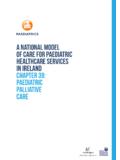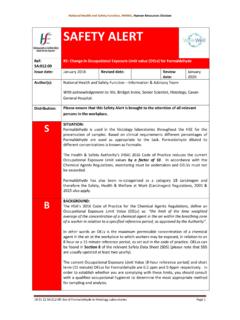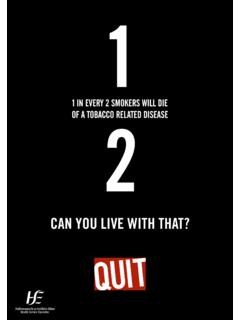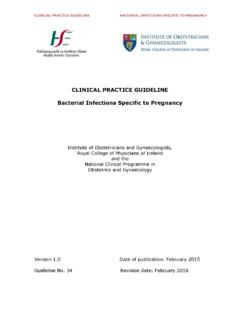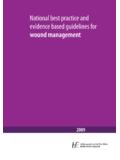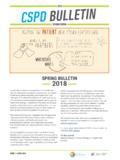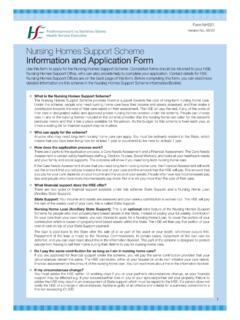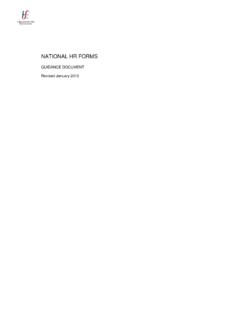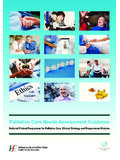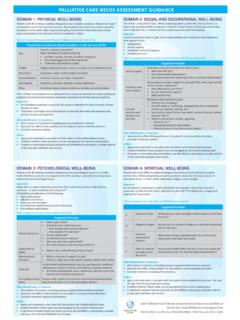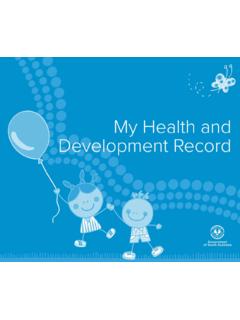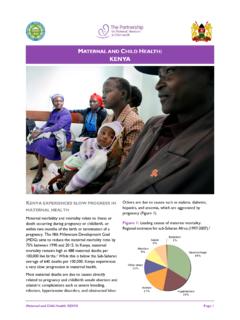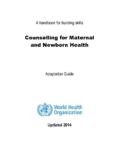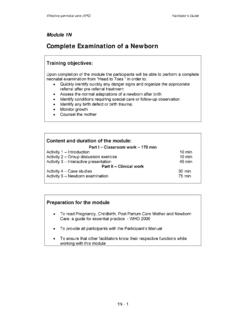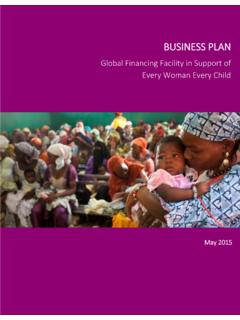Transcription of A National Model of Care for Paediatric Healthcare ...
1 A National Modelof care for PaediatricHealthcare Servicesin IrelandChapter 45:Universal child health ProgrammeClinical Strategy and Programmes DivisionTable of Introduction Universal child health Programme Review of the child health Screening and Surveillance Programme Key Principles of the revised child health Model Challenges in the Future Service Delivery of the child health Programme Abbreviations and Acronyms References 71national Clinical Programme for Paediatrics and neonatology:a National Model of care for Paediatric Healthcare services in InTroduCTIonIn addition to the acute and on-going primary, secondary and tertiary health services for children described within this Model of care , there is a comprehensive health service provided free of charge to all children in the community.
2 This section describes this universal service and outlines the review of this service which is currently being is good evidence that economic, social and environmental conditions, and public policies which impact on these, have an enduring impact on children s, and subsequent adults , health and well-being. It is within this wider context of health determinants that children s health , illness or disability is managed. Changes in public policies which invest in early childhood, and the delivery of universal and progressive health and social services to support families with children, provide excellent rates of returns on the investment and can break the inter-generational cycle of unIversal child health ProgrammeThere are a number of services which impact on children which are provided on a universal include.
3 Maternity and Infant care Scheme, provided by general practitioners (GPs) in conjunction with hospital obstetricians Newborn Bloodspot Screening programme Neonatal Hearing Screening programme (first introduced in 2011) child health Screening and Surveillance programme Childhood and School Immunisation programme Dental health Screening programmeThese services are provided free of charge, as are all referrals arising from screening and surveillance activities. The provision of these personal health services is enshrined in various laws passed between 1907 and 2004.
4 ireland s universal child health programme provision is similar to international models. The child health Screening and Surveillance (CHSS) programme provides for systematic, evidence-based assessments of all pre-school and primary school children. It incorporates health promotion and anticipatory advice for parents and provides for an early identification and referral service for medical and developmental conditions, including referral to health and social care professionals. The CHSS programme is mainly provided by public health nurses (PHNs) and community medical doctors.
5 The initial physical examination of the baby after birth is carried out by the hospital paediatrician, the community midwife or the GP. The current CHSS programme, last reviewed in 2005 is outlined in Table 1. 2national Clinical Programme for Paediatrics and neonatology:a National Model of care for Paediatric Healthcare services in IrelandTable : child health Screening and Surveillance programmeSource: Best health for Children Revisited (2005)3 National Clinical Programme for Paediatrics and Neonatology:A National Model of care for Paediatric Healthcare services in IrelandThe governance for the delivery of the child health programme is split within the health Service Executive (HSE), with the nine new community Healthcare organisations (CHOs) under the Primary care Division responsible for the operational delivery of the service and the health and Wellbeing Division being responsible for policy implementation, strategic development, guidance and advice.
6 Performance against health indicators is monitored by the health and Wellbeing Division while the budget, apart from vaccine procurement, is mainly held within the Primary care Division. revIew of The child health sCreenIng and surveIllanCe ProgrammeThe child health Screening and Surveillance service is currently being reviewed. The new programme will build on the strengths of the current system. The new child health programme will be based on a Model of progressive universalism. This provides the framework within which services for children should be developed.
7 It is described as a perspective that combines universalism with the targeting of resources on those that have special needs for support or protection; in other words, help to all and extra help for those who need it most (DOH, 2007). While having its roots in social justice and social policy, it now underpins child health programmes in other countries (DOH, 2009; Scottish Executive, 2005). It is a key concept in the Department of Children and Youth Affair s Early Years Strategy (2013) and is a goal of Better Outcomes Brighter Futures (DCYA, 2014).In order to incorporate the broader view of child health , the review is being supported by a multidisciplinary steering group, which includes representatives of HSE community professionals (nursing, medical and health and social care professionals), management, public health , midwifery and paediatrics; general practice; dental health .
8 TUSLA and the Department of Children & Youth Affairs, and the Department of review is also: Looking at the recent evidence in relation to health promotion, screening and surveillance activities as outlined in the current programme. These include developmental assessment, hearing and vision screening, medical examination, health promotion, newborn metabolic screening, growth monitoring and oral/dental health . Reviewing the evidence and service requirements for areas of the programme not included in the previous revision, such as infant mental health and enuresis Reviewing the referral criteria and pathways for conditions identified as part of the screening process, in collaboration with key stakeholders and the recommendations of the Community services for Children with On-going health Needs chapter of the National Clinical Programme for Paediatrics and Neonatology Model of care .
9 Reviewing the existing training programme including the method of delivery of training, for example elearning options. Exploring the role for clinical nurse specialists and advanced nurse practitioners in the delivery of the child health programme. Exploring the development of information and communications technology (ICT) systems and supporting applications4 National Clinical Programme for Paediatrics and Neonatology:A National Model of care for Paediatric Healthcare services in IrelandThe review is being carried out within the context of the development of primary care networks, which aim to provide a more integrated service at local level between general practice and community health services .
10 The establishment of the nine CHOs, which will provide a co-ordinated management structure for HSE services at community level, and the introduction of the new under six GP contract. The revised child health programme will review and identify the Key Contact Visits to be provided by professionals to all children, will define the professional inputs (resources and training) required and will be underpinned by key Key PrInCIPles of The revIsed child health Model 1. All children will have access to defined core (universal) services as underpinned in legislation.
